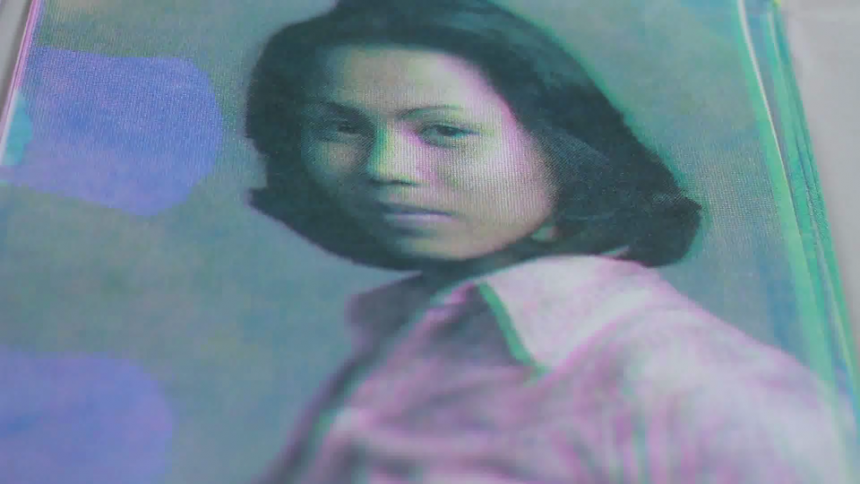“…I cried a little at the end because we share many similar experiences. I had no idea what the poem was about, and I was deeply surprised and moved by it.”
At one point in Brown Girl, Gretchen Carvajal remarks that her printmaking is less about the prints themselves and more about “trying to find things to call home.” There’s a unity in the Filipino-American student’s artwork that transcends her thoughts and even the text of her own spoken word poetry. Family photo albums are copied and reprinted with various tints and exposures speaking volumes about where Carvajal’s come from and where she is now.
Violet Wang’s documentary short, which plays as part of the Wisconsin Film Festival’s “Portraits and Pictures From Wisconsin’s Own,” traverses the gap between Carvajal’s artistic interests and her childhood dreams of first coming to America. As a first-time filmmaker featured in last year’s festival, the director showed a fascination with process and in Brown Girl, she’s emphasizing the work once again. Wang was more than willing to check back in with us for “5 Questions:”
1. Did you first learn about Gretchen through her artwork?
Nope! We used to work at the library together. I had absolutely no idea about her art and poems before making this documentary. I was trying to find a subject for my video journalism class, and Gretchen came to me and asked if I could make a video for her. Everything worked out nicely.
2. Gretchen speaks a lot in the film, but she’s often talking over other footage. Was it important to you to emphasize the work over what she was saying about it?
Yes, I love connecting the dots between images and words. I think showing her works or footages of she working is a good way to convey different aspects of her.
3. You spend over 10 seconds — yes I counted — on a print Gretchen makes of her mother. Relative to the other pieces she shows, that’s a much longer time to focus on just one piece.
That is for sure my favorite print. Not only is this print beautiful, I love how Gretchen describes this print. She always seems so happy and thankful talking about her mother and her family. That’s why I wanted to focus the documentary on the relationship between her work and her family.
4. For the spoken word piece you end on, the camera is much shakier. Did you shoot that footage as well?
Yes. I was doing handheld the whole time, [so] the shakiness came from holding the camera for too long — my weak arms! — and I was just being very emotional to Gretchen’s spoken words. That was my first time listening to her poem and I cried a little at the end because we share many similar experiences. I had no idea what the poem was about, and I was deeply surprised and moved by it.
I did bring a tripod to the event that day but ended up not using it. I was a bit unsatisfied about the shakiness at first, but now I am very happy that I used handheld. I feel using handheld sort of shows me being there, listening to her and feeling her emotions.
5. Infurmary played at the film festival last year and in that interview, you mentioned that you had no previous experience making films. How have you changed as a filmmaker between then and now?
I definitely have more experience! I became more confident and more insecure at the same time. I continued my film production classes in school, and I am working on a 3o-minute film for a capstone class. It will premiere at the Marquee on May 6.
- Brown Girl plays as part of the “Portraits and Pictures from Wisconsin’s Own” program on Sun, Apr 2 at 1:30p in the Union South Marquee.

